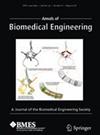Knee-Loading Predictions with Neural Networks Improve Finite Element Modeling Classifications of Knee Osteoarthritis: Data from the Osteoarthritis Initiative
Abstract
Physics-based modeling methods have the potential to investigate the mechanical factors associated with knee osteoarthritis (OA) and predict the future radiographic condition of the joint. However, it remains unclear what level of detail is optimal in these methods to achieve accurate prediction results in cohort studies. In this work, we extended a template-based finite element (FE) method to include the lateral and medial compartments of the tibiofemoral joint and simulated the mechanical responses of 97 knees under three conditions of gait loading. Furthermore, the effects of variations in cartilage thickness and failure equation on predicted cartilage degeneration were investigated. Our results showed that using neural network-based estimations of peak knee loading provided classification performances of 0.70 (AUC, p < 0.05) in distinguishing between knees that developed severe OA or mild OA and knees that did not develop OA eight years after a healthy radiographic baseline. However, FE models incorporating subject-specific femoral and tibial cartilage thickness did not improve this classification performance, suggesting there exists an optimal point between personalized loading and geometry for discrimination purposes. In summary, we proposed a modeling framework that streamlines the rapid generation of individualized knee models achieving promising classification performance while avoiding motion capture and cartilage image segmentation.


 求助内容:
求助内容: 应助结果提醒方式:
应助结果提醒方式:


